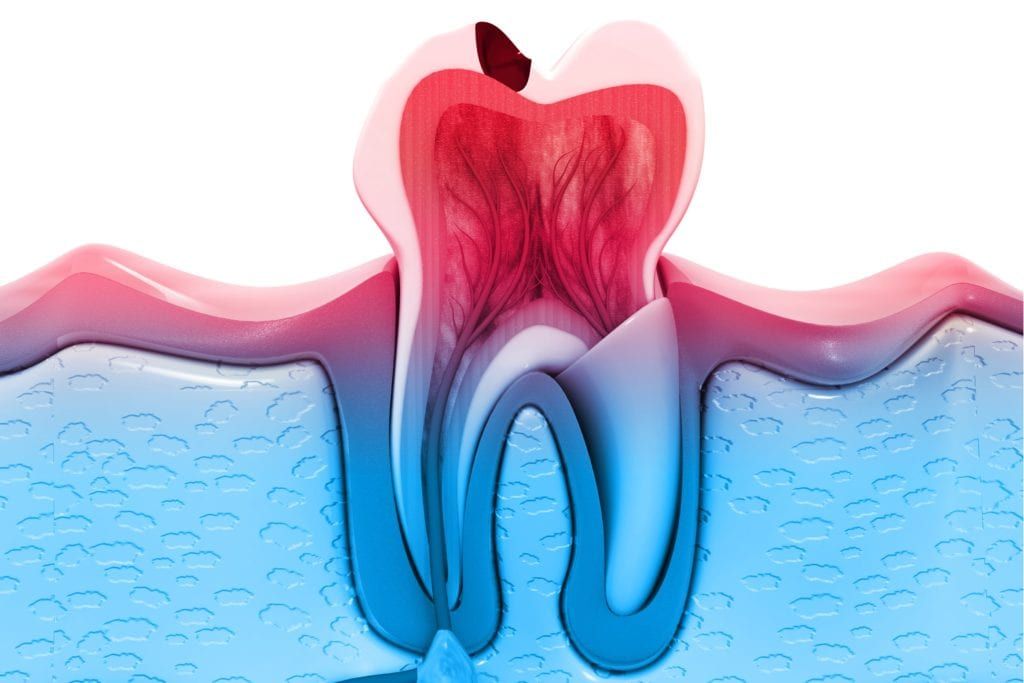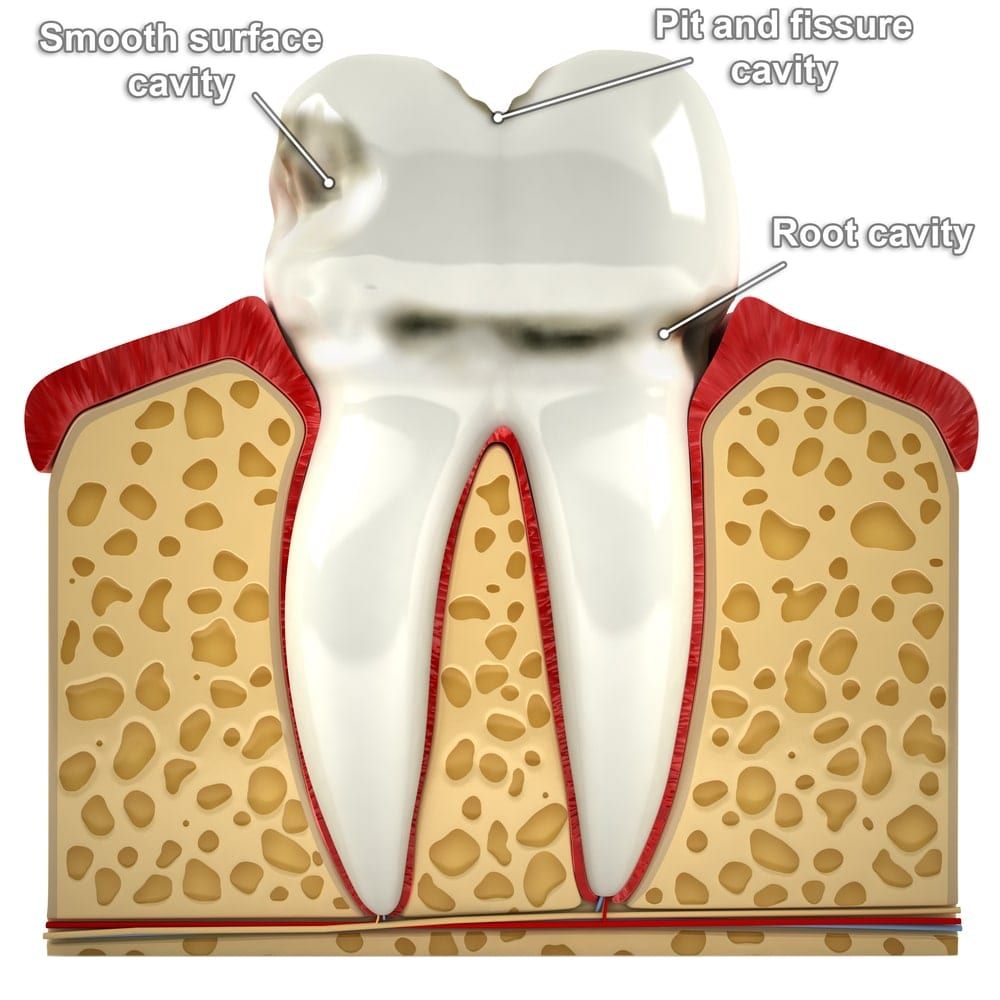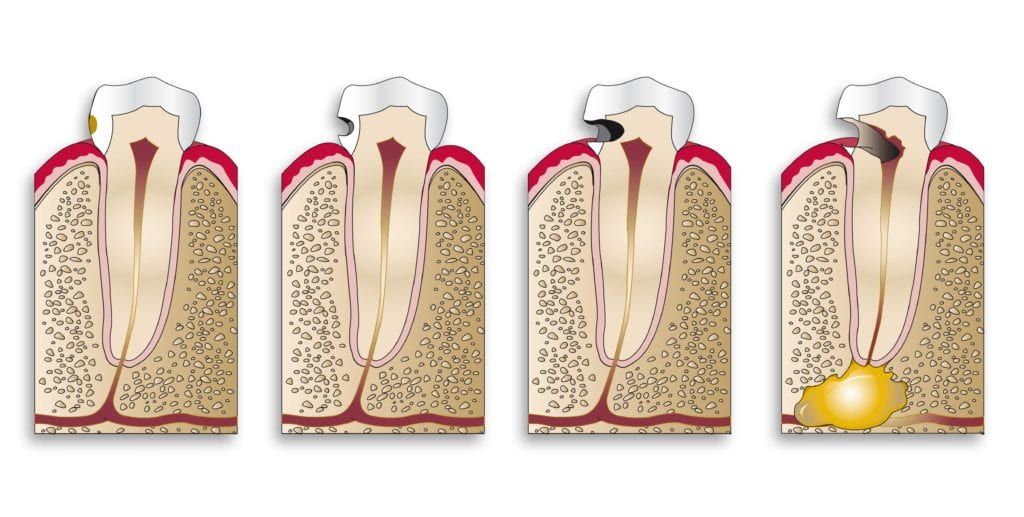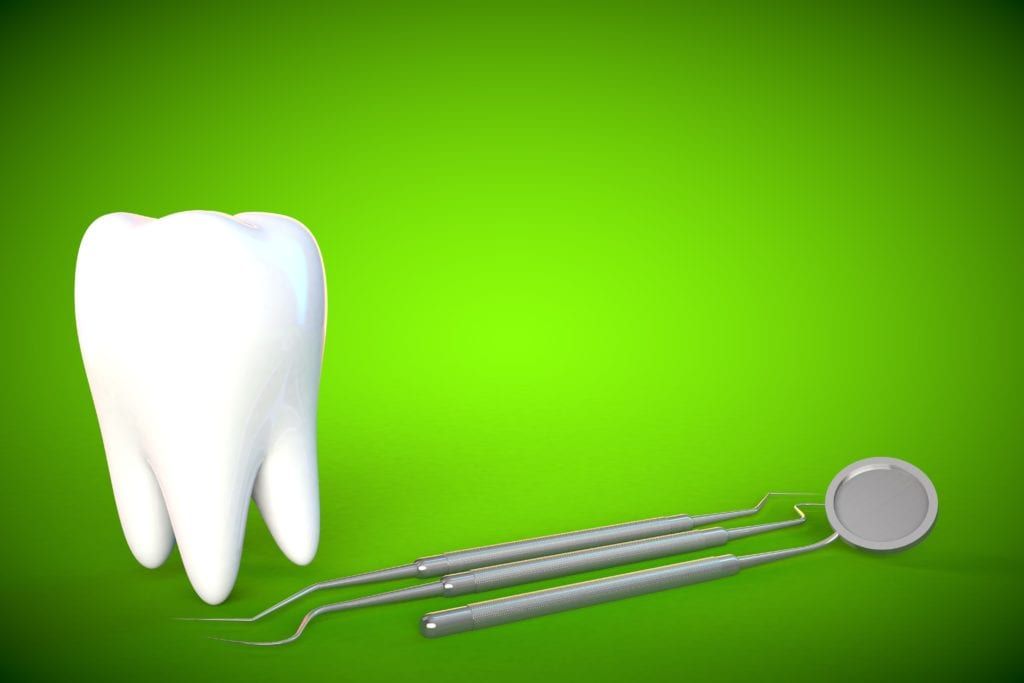Cavities are the arch enemy of teeth. They are the very enemy that dentist’s fight against everyday in their offices and you fight against everyday over your bathroom sink. It is generally accepted knowledge that cavities are bad and preventing them is of the utmost importance. Beyond this, however, how much do you actually know about cavities? Do you know enough to keep you and your family safe from this everyday dental nemesis?
By learning more about cavities, we at Quarterpath Dental hope to provide you with enough information to protect yourself and your loved ones from the dangers of dental cavities. Without further ado, we present Quarterpath Dental’s Ultimate Guide to Cavities:
What is a Cavity?
The basic definition of a cavity is a hole in your tooth. But, how does your tooth suddenly develop a gaping hole? Well, brace yourselves for something quite gross. The human mouth naturally contains a variety of oral bacteria. Among them are Streptococcus mutans and Streptococcus sobrinus, as well as lactobacilli, which are the bacteria responsible for cavity formation.

These bacteria attach themselves to the tooth’s enamel and begin feeding on the very same foods and drinks that you feast on. Specifically, they feed on sugars and carbohydrates, which is why dentists always warn about watching your sugar intake. Just as humans eat and produce waste, these bacteria also eat and, well, produce waste. In your mouth.
Besides the simple, disgusting fact that bacteria are spreading their waste products around your mouth, it is also important to realize that this waste product is highly acidic. Solutions that are highly acidic are known to corrode, or eat away at, the substances around them. Specifically, the acidic waste produced by the bacteria in your mouth will begin to dissolve your tooth’s enamel.
Although your tooth enamel is one of the strongest parts of the human body, when constantly exposed to this acidic solution, it will unfortunately begin to wear down. As it wears down over time, a cavity will begin to form where once healthy enamel once was. Unfortunately, enamel cannot be replaced once it has worn down. Although it can be restored with dental materials, the natural enamel itself never comes back.

Okay, so now we’ve covered what a cavity is. Did you also know that there are different types of cavities? Yes, there are three different types of cavities that can form in the mouth based on the location of their formation. Namely, the three different types of cavities are:
- Pit and fissure: pits and fissures are the names of the grooves on the chewing surfaces of your molars. Thus, pit and fissure cavities are found on the molars within these grooves. This type of cavity is very common because it is easy for bacteria to accumulate in the pits and fissures of the molars. This type of cavity is more common in those who don’t brush as regularly as they should.
- Smooth surface: unlike pit and fissure cavities, this type of cavity forms on the smooth surfaces of your teeth. Because it is often hard for bacteria to attach itself to the smooth surface of teeth, this type of cavity is not as common as the other two types. Nevertheless, it can still be found in those with poor oral hygiene habits. Out of all the types of cavities, this is the slowest-growing type.
- Root: these cavities form on the tooth roots and are common in older adults and seniors. This is because older adults are more likely to experience gum recession, where the gums pull down and away from the tooth. Because the tooth roots are normally protected by the gums, they are more susceptible to cavities when they are exposed as the result of gum recession. Additionally, because the tooth roots do not contain the same amount of enamel as the crown, root cavities can grow quickly if not treated.
How do Cavities Progress?
Now we know what cavities are and how they form, we can better understand how cavities progress and why this has a negative impact on our oral health. All cavities begin with excess bacteria accumulating on the tooth enamel. However, cavities can progress over time into several different stages.
Cavity progression is described from stage 1 all the way to stage 6. The stage of the cavity is usually based on how deep the cavity penetrates. The human tooth has three layers: the outer enamel, the middle dentin, and the inner pulp. As with most ailments, the earlier the stage, the easier the treatment and the better the treatment outcome.
A stage 1 cavity is hardly a cavity at all, rather it is the presence of white spots on the tooth’s surface. These white spots indicate a loss of calcium. This is the first warning sign that acid is beginning to wear down the enamel. However at this stage, the effects of corrosion can be removed with a fluoride treatment.
A stage 2 cavity is characterized by incipient lesions. An incipient lesion is a fancy name for early decay or decay that only affects the enamel layer. Depending on the severity of the lesion, fluoride treatments may be used to strengthen the enamel, dental sealants may be used to allow for the remineralization of the enamel, amorphous calcium phosphate may be applied to support re-calcification, or the cavity may simply be monitored closely.

A stage 3 cavity is one that has reached the dentin, or middle, layer of the tooth. Because the dentin layer is porous, a cavity that reaches the dentin can allow stimuli to reach the inner nerves of the tooth. This can result in pain or tooth sensitivity. This is the stage where most people notice something is wrong with their tooth. At this stage, a filling procedure is usually required to restore the decayed tooth. During a filling procedure, the decayed tissue is removed, the cavity is cleaned to eliminate bacteria, and the remaining space is filled with a dental material.
A stage 4 cavity refers to cavities that have reached the pulp, or innermost, layer of the tooth. This inner layer is composed of nerves and blood vessels that become infected by the excess bacteria. This infection generally results in inflammation, swelling, pain, and tooth sensitivity. To restore a tooth with a stage 4 cavity, a root canal is needed to thoroughly remove the decayed tissue and bacteria.
A stage 5 cavity is similar to stage 4, however the infection has now spread to the tooth’s roots, often causing an abscess to form at the bottoms of the roots. These abscesses are very painful and can even infect the surrounding bone. They can even lead to the loss of the tooth. Stage 5 cavities usually require endodontic surgery to restore the tooth. In extreme cases, extraction may also be required.
Unfortunately, the final stage of a cavity is the loss of the tooth. This generally only occurs when the decay has been allowed to continue to the point where the tooth has been entirely consumed and there is no longer enough tooth structure to hold it in place. The good news, however, is that most people seek treatment for their cavities around stage 3 and are usually able to save their tooth without too much hassle.
How do I prevent Cavities?
The best ways to prevent cavities are to keep your teeth clean and minimize your sugar intake. Keeping your teeth clean with regular brushing and flossing minimizes the amount of bacteria in your mouth and prevents large amounts of bacteria from settling in certain places. Additionally, professional teeth cleanings performed by Dr. Shuck and Dr. Mitchell ensure that they will clean the places you may have missed during your brushing and flossing.
You will also want to minimize your sugar intake to prevent bacteria populations from increasing. Remember, bacteria’s main food source is sugar from the foods you eat and the beverages you drink. Limiting their main food source will also limit their ability to survive, reproduce, and thrive.
How long has it been since your last dental checkup and professional teeth cleaning? Don’t put it off any longer, schedule a consultation with Dr. Michael Shuck and Dr. Shawn Mitchell of Quarterpath Dental today! Quarterpath Dental is proud to serve the residents of Williamsburg, VA and the surrounding areas.


